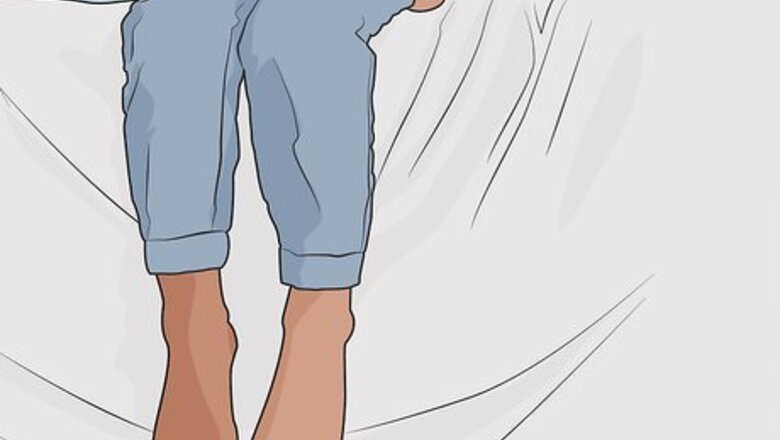
views
Testing Your Own Knee Jerk Reflex
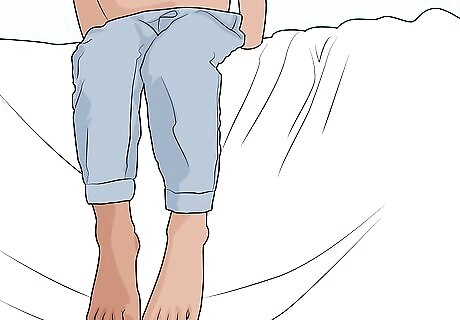
Sit on the edge of a bed or table with your legs dangling. Find a surface that’s high enough so that you can let your legs dangle freely when you’re sitting on it. Keep your knees bent at a 90° angle when you sit. Your legs will need to be able to swing for you to see the reflex at work. You might also find it helpful to lift your knee slightly by placing one of your hands underneath it.
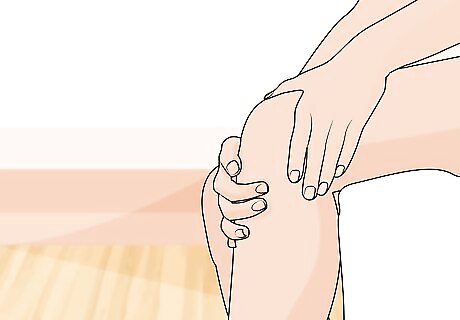
Tap the spot right below your kneecap with the side of your hand. Feel your knee to find a slight gap between the bottom of your kneecap and the top of your shin bone. Gently tap that space with the side of your hand, or have a friend do it for you. If you have a medical reflex hammer, that’s even better! These hammers are specially designed to hit the tendon precisely without causing any pain. Don’t use any other type of hammer, or you could hurt yourself. Alternatively, cup your hand and keep your fingers tightly together. Rest your wrist on your kneecap and swing your fingers down to hit the gap.
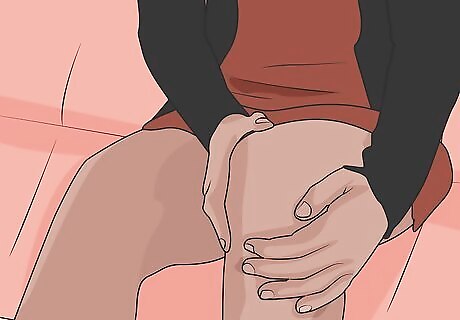
Watch for your lower leg to kick forward slightly. When you tap your knee with the side of your hand or a reflex hammer, the muscles in your thigh will tense up briefly. Watch for your leg to kick out a little bit, then come to a rest.Be aware: In a normal knee jerk reflex, your leg should stop swinging almost immediately after the reflex kicks in. If your knee keeps swinging, this can also be a sign of a neurological issue. You may feel a slight “tickling” sensation in your leg when you hit the tendon. You might get a stronger reaction if you’re using a proper medical reflex hammer. If your leg doesn’t respond at all or has a very sluggish reaction, that could be a sign of nerve damage in your leg or lower spine. If this happens, don’t panic—it’s possible you just didn’t do the test correctly. Call your doctor if you’re worried.
Getting a Neurological Exam

See your doctor if you’re concerned about a neurological problem. Reflex testing is a standard part of most general physical exams. However, your doctor might also recommend reflex testing if they suspect you have a neurological problem, such as a disease or injury that affects your nervous system. Ask your doctor if you need a reflex test. They might also recommend a patellar reflex test if they suspect damage to the nerves in your lower back.

Talk to your doctor about your health history. Let your doctor know if you’ve had any injuries or illnesses that might affect your reflexes, or if you’ve had any symptoms you’re concerned about. This will help them determine the source of the problem. Common symptoms of neurological disease or nerve damage include: Sudden or persistent headaches Numbness, tingling, or weakness in any part of your body Changes in vision Tremors, involuntary movements, or loss of coordination Back pain that radiates to other parts of your body, like your legs Difficulty thinking, remembering, or concentrating
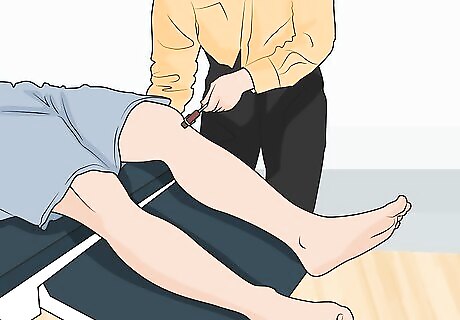
Let them test all your deep tendon reflexes. In addition to testing your knee jerk reflex, your doctor or neurologist will test the reflexes in other parts of your body. Just like with the knee jerk reflex, they will test these reflexes by gently tapping your tendons with a rubber hammer. Other common deep tendon reflex tests include:Keep in mind: If you’re really focused on what the doctor is doing, it can sometimes make the reflex tests less effective. To offset this problem, they may ask you to lock your fingers together and simultaneously pull your hands apart. This action will reinforce the reflex movements while also distracting you from the tests. The biceps and triceps reflexes. For these tests, the doctor will tap tendons near your elbow to make the muscles in your upper arm contract. The brachioradialis reflex. The doctor will tap a tendon above your wrist to make your forearm flex. The ankle reflex. This test involves tapping your Achilles tendon (the tendon that connects your heel to your calf muscles) with the hammer to make your foot jerk.

Consent to other tests to determine the source of the problem. If your doctor suspects a neurological issue, they may refer you to a specialist, called a neurologist, for more testing. The neurologist will ask you about your health history and do a variety of tests. They might: Test your ability to feel a soft cloth, some light needle pokes, or objects of different temperatures. Ask you questions to check your basic language and math skills, or test your ability to remember basic information. Check your vital signs, such as your pulse, respiration rate, body temperature, and blood pressure.



















Comments
0 comment